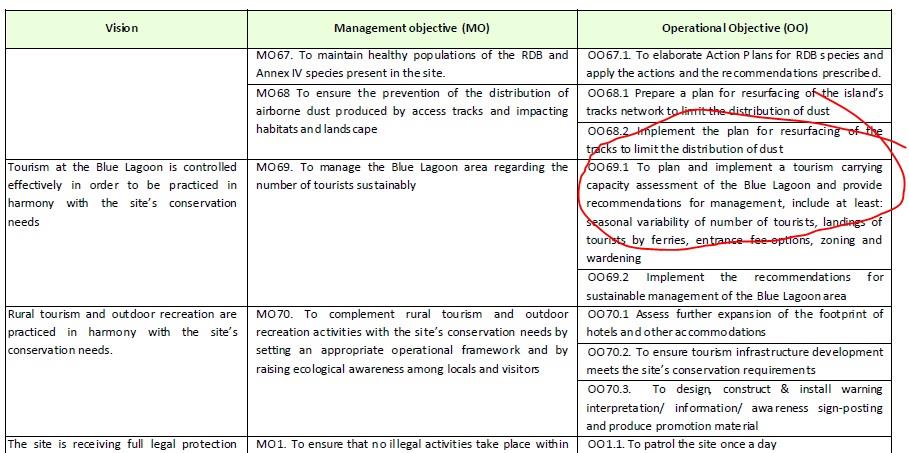During the past weeks, the island of Comino has been in the news. The controversy surrounding the deckchair/umbrella hawkers free-for-all at the Blue Lagoon focused on overcharging, breaching of permit conditions and the resulting lack of space for the public making use of public facilities at the beach.
Fines were imposed by the Malta Tourism Authority. This is fine (pun intended) in the short term. However, we need to plan for the long term, keeping in mind that the island of Comino is first and foremost a Natura 2000, and a touristic destination second. Sites forming part of the Natura 2000 network are designated as Special Areas of Conservation (SAC) and Special Protection Areas (SPA) according to the Habitats and Birds Directives of the European Union, where habitats and species are listed. The Directives are aimed to provide protection to the most vulnerable of the species listed.
It has been stated that every day, at the peak of the summer season, as many as 5,000 visitors land on Comino, most of whom remain in the Blue Lagoon and its environs .
The Natura 2000 Management Plan for Comino published recently considers that that tourism at the Blue Lagoon needs to be controlled efficiently in order to ensure that it is “in harmony with the site’s conservation needs”. One of the measures which the Comino Management Plan establishes as an operational objective is “to plan and implement a tourism carrying capacity assessment of the Blue Lagoon”.

The Management Plan beleives that the tourism carrying capacity assessment should be carried out within the first year of the plan’s implementation, which means pretty soon! The issue is of fundamental importance in ensuring that the activity permitted on the island of Comino is compatible with its ecological requirements.
It is not known whether this carrying capacity assessment has been carried out yet. If not it should be done at the earliest.
This is not the first time that Maltese authorities have been asked to consider a proposal to study the possibility of limiting access to a specific site for protection purposes. Around 12 years ago, after rehabilitation work carried out at the Hypogeum in Ħal-Salfieni was concluded, it was decided that there was an urgent need to control its microclimate in order to better protect this archaeological jewel so a maximum limit of 80 visitors per day was established.
Various other countries place limits on tourism in order to better control its environmental impacts. There are various examples, but permit me to point to the Brazilian archipelago of Fernando de Noronha, 545 kilometres off the coastal city of Recife. The archipelago is a UNESCO World Heritage site and the number of visitors is restricted in order to adequately protect its environmental patrimony. The environmental protection rules of the Brazilian archipelago of Fernando de Noronha go into such detail as to even forbid the use of sun protection lotions/creams or even the use of footwear on the beach, as well as curtailing various other activities incompatible with the archipelago’s ecological characteristics!
It is a path we should consider following for Comino, if we are serious about protecting the little that we still have.
It was welcome news earlier this week as three of Malta’s environmental NGOs, Din l-Art Ħelwa, Friends of the Earth and Nature Trust have endorsed the proposal for carrying out the capacity assessment of the Blue Lagoon at Comino. Comino deserves our protection. Implementing the Natura 2000 Management Plan for Comino would be a suitable first step. And the sooner the better.
[email protected],
http://carmelcacopardo.wordpress.com
Mr Cacopardo is an architect and civil engineer and Deputy Chairman of Alternattiva Demokratika – The Green Party in Malta.